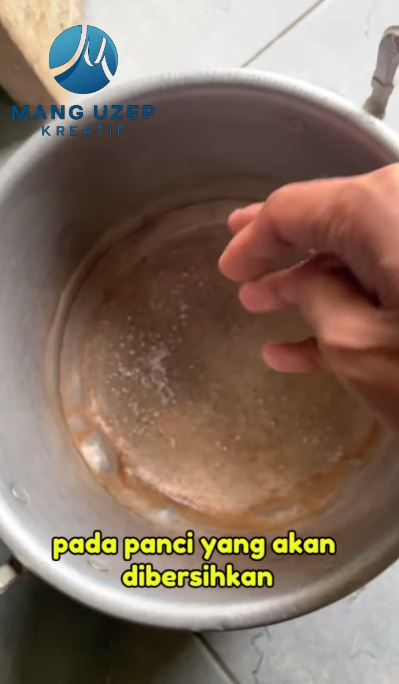Instagram/@jesep.ardin
Brilio.net - Pans are one of the kitchen tools that can support cooking activities. Used to cook various types of menus, from boiling vegetables to making soup, pans are a mainstay in the kitchen. This kitchen tool is made from various materials, such as stainless steel, aluminum and copper. Well, choosing the right pan can affect the results of cooking and efficiency in cooking, you know.
Basically, apart from its important function, the quality of the pan also greatly influences comfort and safety when cooking. A good quality pan has even heat distribution, so the food is cooked perfectly. The non-stick material on the pan also makes the cooking and cleaning process easier. However, it is important to pay attention to the pan material as some can react with food, which can affect the taste and safety of the food.
Taking good care of your pan is also an important aspect to ensure that the kitchen utensil is durable and functional. Cleaning the pan properly is one way to extend the life of the pan. Although it cannot be denied that the pan used is continuously exposed to stubborn dirt, such as scale.
One type of crust that often sticks to the pan comes from boiled water. Yup, boiled water containing minerals or lime often leaves deposits in the form of white crust. If not cleaned immediately, the white crust will get thicker and stick tightly.
Then, to clean the scale on the pan, a number of people usually rub it vigorously. Apart from that, there are also those who choose to soak the pan in hot water so that the crust comes off. Not only with these two methods, pan scale can also be removed using simpler methods.
Furthermore, an Instagram user @jesep.ardin once shared a more practical trick for cleaning limescale in pans. Through one of the uploaded videos, he admitted that he did not brush or soak the pan in hot water. Instead of using special tricks like that, he instead relies on one simple ingredient to remove stubborn crust on the pan.
Reported by BrilioFood on Thursday (23/5), the simple ingredient in question is citrus. How to use it is quite easy. First of all, make sure the pan is dry first. A dry pan will allow the citrus to stick optimally to the crusty areas.

photo: Instagram/@jesep.ardin
Next, simply sprinkle the powdered citrus onto the crusty inside of the pan. Make sure the citrus is evenly distributed, okay? For thick crusty parts, you can add more citrus.

photo: Instagram/@jesep.ardin
If you have added citrus, leave the pan in this condition for approximately 1 hour. After letting it sit, the crust on the pan will slowly disappear by itself. For maximum results, you can rub the pan briefly with your hands so that the crust comes off. Only then rinse the pan under running water.

photo: Instagram/@jesep.ardin
Well, the pan that has been cleaned looks shinier than before. This indicates that citrus is really very effective in removing stubborn stains such as water crust. But not only water crust, this method can also be used to remove burnt crust on pots or pans, you know.
View this post on Instagram
Tips for dealing with pot holes with simple ingredients.
Dealing with pot holes can be a challenge, but there are some simple ways you can try to fix them. Here are 9 tips for using ingredients that are easy to find at home.
1. Patch with aluminum foil.
Cut a piece of aluminum foil, fold it several times until it is thick, and place it over the hole. Press firmly so that the foil sticks and covers the hole well.
2. Use heat-resistant glue.
Heat-resistant glue such as epoxy can be used to patch small holes in pans. Make sure the holed area is clean and dry before applying glue.
3. Patch with baking soda and super glue.
Mix baking soda and super glue until it forms a thick paste. Apply the paste to the hole and let it dry. This paste will harden and seal the hole.
4. Use a cut drink can.
Cut a small piece from an old drink can and place it over the hole. Use heat-resistant glue to attach it, making sure the piece of tin covers the hole completely.
5. Solder with tin.
If you have a soldering kit, use soldering iron to patch the holes in the pan. Heat the tin until it melts and apply it to the hole to seal it.
6. Use thin metal strips.
Look for thin pieces of metal such as from can lids. Cut and shape to the size of the hole, then glue with heat-resistant glue or solder if possible.
7. Seal with multipurpose adhesive.
Multipurpose adhesives such as duct tape can be a temporary solution. Apply several layers of duct tape to the hole, but this is only a short-term solution because the tape can come off when exposed to heat.
8. Mix flour and water.
Make a thick mixture of flour and water, apply it on the hole and let it dry. Although this is a temporary solution, this mixture can retain water and prevent leaks for a while.
9. Use iron glue.
Iron glue can be used to seal small holes. Apply glue to the hole and let it dry according to the instructions on the package. This glue will harden and be heat resistant.
With the tips above, you can repair a pot with holes using simple materials you have at home. Although the results may not be permanent, this solution can help solve the leak problem until you can get a new replacement pan.
(brl/lut)